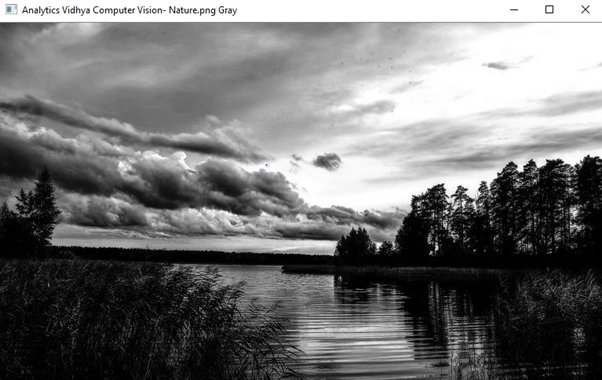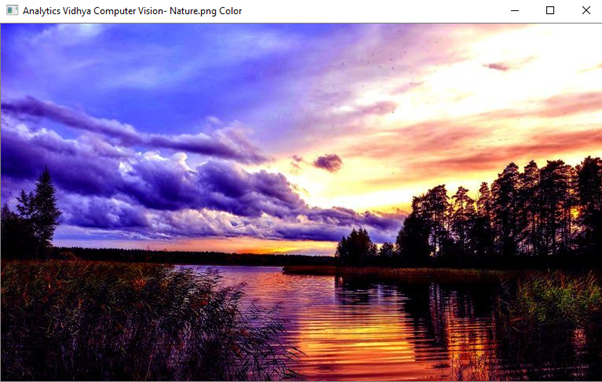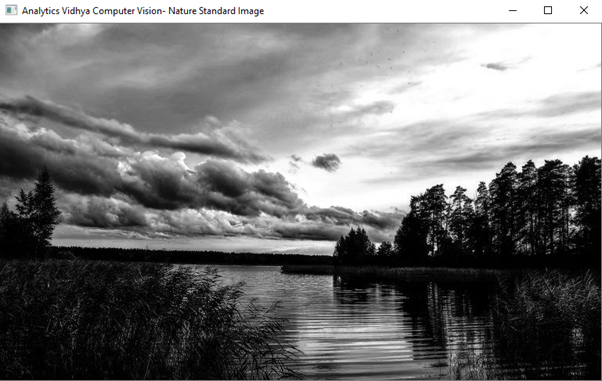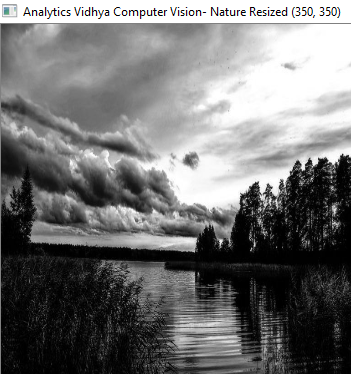This article was published as a part of the Data Science Blogathon
Computer Vision is said to be one of the most interesting application fields of Machine Learning. Computer Vision. As implied by the name, Computer Vision enables computers to detect, identify, and recognize, objects and patterns in the 3D surroundings.
If you have not viewed my previous articles on Computer Vision and would like to do so, kindly navigate to the following hyperlinks:
This article will introduce you to more features of the OpenCV Library.

Source: Analytics Vidhya.
As we seek to explore more about the world of OpenCV, let us take a moment to recap, or brush up, on what we have learned up to this point.
We understand exactly how to load an image into the system’s main memory. We will now look at more complex operations that can be performed on image data. To facilitate this OpenCV learning experience we will be using an image that may be downloaded from this link. Alternatively, you may save the image found below.

Source: Pinterest.
The first and foremost step will be to load the image into our system memory as follows:
import cv2
# load it in GRAYSCALE color mode...
image = cv2.imread("""C:/Users/Shivek/Pictures/cd0c13629f217c1ab72c61d0664b3f99.jpg""", 0)
cv2.imshow('Analytics Vidhya Computer Vision- Nature.png Gray', image)
cv2.waitKey()
cv2.destroyAllWindows()
Please Note: Replace C:/Users/Shivek/Pictures/cd0c13629f217c1ab72c61d0664b3f99.jpg with the location the image is stored on your personal computer (YOUR file path).
The above code successfully loads the required image into our system memory. It is good to know that we
have loaded the image in GRAYSCALE colour format.
(Explanation to the above code will be omitted as it is the same as the previous article(s).
Output to the above code block will be seen as below:

Let us gain insight into our image by viewing the associated properties. We will now talk about the shape of the image.
print(image.shape)
Output is as below:

Notice that the shape method returns two values to us in the form of a tuple. These two values represent the height (y-axis) and width (x-axis) of the image, respectively. Essentially what I am saying is:
print("The Image Height Is: %d Pixels"%(image.shape[0]))
print("The Image Width Is: %d Pixels"%(image.shape[1]))
Output to the above code is
as below:

There are some situations in which the shape method returns a tuple of three integer values. The first value represents the height (y-axis), the second value the width (x-axis), and the third value, the number of color channels.
Colour channels affect the colour ranges (i.e., Types/Shades of colours | Reds, Blues, Pinks, etc.) of your pixels. Taking our example, we have a GRAYSCALE image- A GRAYSCALE image has
just one color channel because each element in the pixel array contains just
one value that ranges from 0 to 255.
For example, and experience purposes, let us re-load our nature image, and view the shape properties- However, in this particular instance, we are loading the image in standard color format.
import cv2
# re-load it in color mode...
image = cv2.imread("C:/Users/Shivek/Pictures/cd0c13629f217c1ab72c61d0664b3f99.jpg", cv2.IMREAD_COLOR)
cv2.imshow('Analytics Vidhya Computer Vision- Nature.png Color', image)
cv2.waitKey()
cv2.destroyAllWindows()
Please Note: Replace the file path in the code, with the absolute location of the image on your personal computer.
The color image will be seen as below:

Our image in color is as downloaded- i.e., it has not been manipulated in any way whatsoever. Now let us proceed to use the shape method on this image.
print(image.shape)
print("Image Height: %d Pixels"%(image.shape[0]))
print("Image Width: %d Pixels"%(image.shape[1]))
print("Number Of Color Channels: %d "%(image.shape[2]))
Output to the above code will be seen as follows:

Notice that there is a third number present in the tuple. This is the number of color channels present in the image. The particular color channel present in this image is BGR Color Channel. It is BGR, not RGB. By default, OpenCV was created to use the BGR Color Channel.
Because the image is in standard color, looking at the image one can see several mixtures and shades of color. It is because there are three color channels- each element of the pixel array, has three values ranging from 0 to 255 and each value represents the intensity of BGR (Blue, Green, Red) at that particular pixel, therefore
allowing for the colors to be mixed and manipulated. We will focus more on color images in future articles.
Coming back to our GRAYSCALE image, we will now attempt to resize the image, to make it cover a smaller surface area on our computer screen. To rescale an image, we need to use the resize() method offered by the OpenCV Library.
import cv2
# load the image in a GRAYSCALE format
image = cv2.imread("C:/Users/Shivek/Pictures/cd0c13629f217c1ab72c61d0664b3f99.jpg", cv2.IMREAD_GRAYSCALE)
cv2.imshow('Analytics Vidhya Computer Vision- Nature Standard Image', image)
cv2.waitKey()
cv2.destroyAllWindows()
# resize the image to be pixel dimensions 350 by 350
resized_image = cv2.resize(image, dsize=(350, 350))
cv2.imshow('Analytics Vidhya Computer Vision- Nature Resized (350, 350)', resized_image)
cv2.waitKey()
cv2.destroyAllWindows()
resized_image = cv2.resize(src=image, dsize=(350, 350))
We make use of the resize() method to resize the image at hand- this could mean either increasing the size or decreasing it. We chose to decrease the image size, i.e., make it smaller. This method takes in two primary arguments:
cv2.imshow('Analytics Vidhya Computer Vision- Nature Resized (350, 350)', resized_image)
cv2.waitKey()
cv2.destroyAllWindows()
Up to this point, one should be familiar with what the three lines of code above do- It will display the window, wait an indefinite period of time, and terminate all windows upon user command.
The last task for us would be to verify that the image size has been reduced.
The output will be seen as follows:


This concludes my article on Advanced OpenCV Features. I do hope that you enjoyed reading through this article and have added new information to your knowledge base.
Please feel free to connect with me on LinkedIn.
Thank you for your time.
The media shown in this article are not owned by Analytics Vidhya and are used at the Author’s discretion.
Lorem ipsum dolor sit amet, consectetur adipiscing elit,